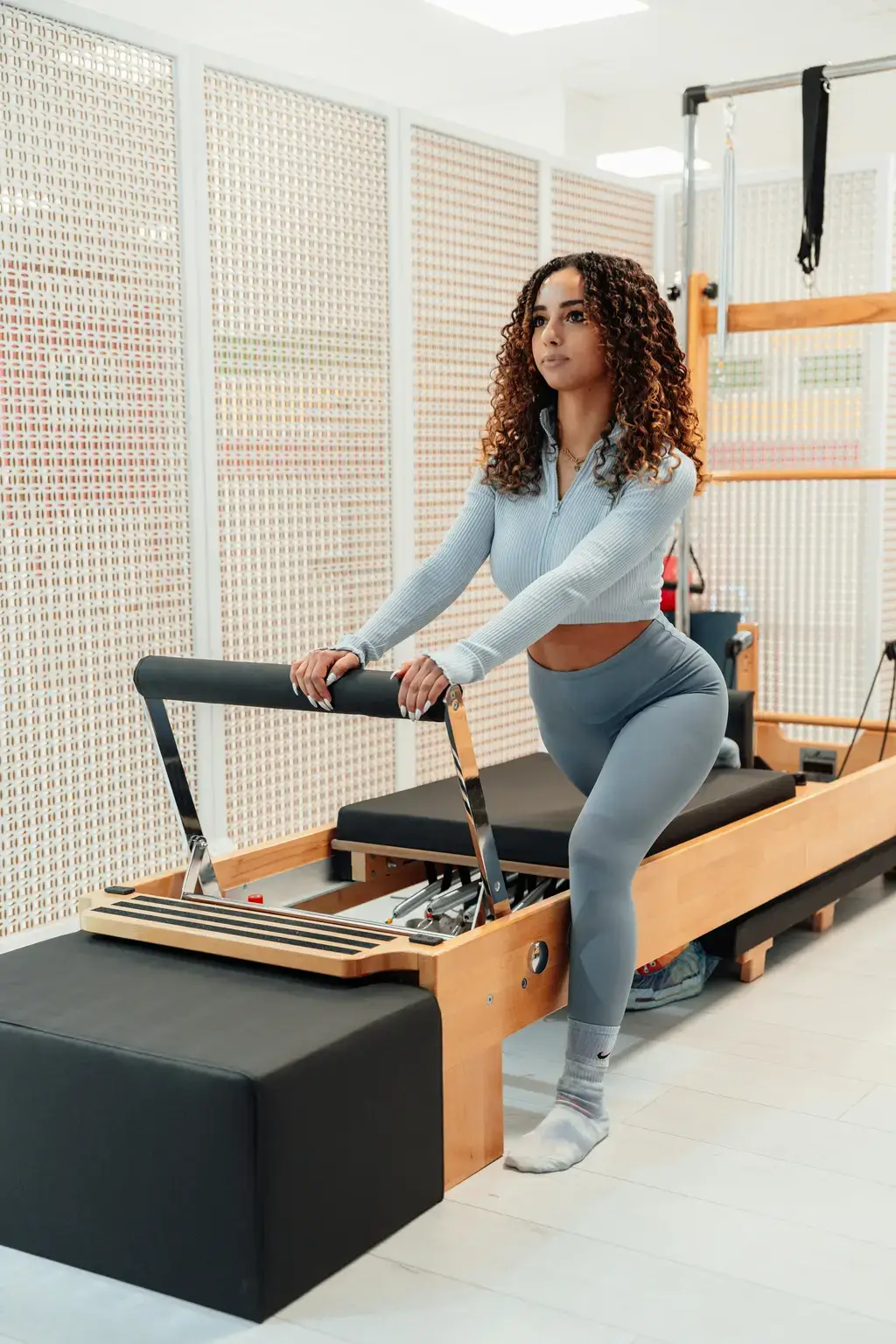Physical Address
304 North Cardinal St.
Dorchester Center, MA 02124
Physical Address
304 North Cardinal St.
Dorchester Center, MA 02124

Regardless of the commercialization of Pilates as a program available in every neighborhood fitness center, numerous scientific studies continually confirm that the certified Pilates system—whether mat-based or machine-based—safely and effectively strengthens the deepest layer of the lumbar-pelvic region. This method achieves muscular balance, simultaneously strengthens and stretches muscles, and corrects spinal deformities.
The general public knows about Pilates primarily through group Matwork classes, where participants perform exercises with or without props.
This article discusses the Pilates system of exercises on Reformer machines, which we use for individual or semi-individual training sessions in specialized Pilates studios.
The father of the Pilates method, Joseph Pilates, conceptually designed a system of exercises on apparatuses, originally called the “Universal Reformer,” to aid in progressing Mat Pilates exercises.
Before World War I, Joseph Pilates lived in England, working as a circus performer and boxer. When WWI broke out in 1914, the English forcibly placed Pilates, a German citizen, in an internment camp, where he began developing the floor exercises we know today as Matwork Pilates.
As time went on, he developed an exercise system called “Contrology,” which necessity created to rehabilitate soldiers confined to bed. To create resistance exercises, Pilates used items available to him at the time, such as bed springs and beer barrel rings. These objects represent the beginnings of the Pilates equipment we know today as the Reformer and the Pilates Ring (Magic Circle).
Today, the Reformer is the most popular and widespread Pilates exercise apparatus. Pilates’ repertoire of machines also includes the Cadillac, Chair, and Barrels.
The specificity of Pilates apparatus work is that a certified instructor guides participants through exercises exclusively in individual or semi-individual sessions.
With its sophisticated system of a sliding carriage, springs, and ropes, the Reformer allows users to perform over 500 different exercises, making it one of the most effective training programs available today.
The unique resistance the springs provide on this machine deepens muscle contractions throughout the entire movement in both phases of muscle strengthening and stretching. Since this places no load on the joints, Reformer training becomes extremely effective.
Another advantage of Reformer training is that it engages the entire body’s musculature, focusing on deep postural muscles. This achieves mobility and stability of the spine, pelvis, and shoulder girdle.
The Reformer offers a wide range of certified Pilates exercises, accommodating clients’ different abilities and health conditions. Therefore, it is no surprise that many professionals from the sports world practice it alongside recreational users to improve their athletic performance. Similarly, clients with various musculoskeletal injuries use it to alleviate or correct deformities and achieve a higher quality of life.
In a very short time, Reformer training builds strength, flexibility, and muscular endurance without risking injuries or stressing the joints.
The number of repetitions and sets for each of the listed exercises depends on the individualized training program a certified instructor directs. It also depends greatly on the initial resistance set (number of springs) and the training goal itself: athletic conditioning, rehabilitation, or recreation.
Try Reformer training and quickly notice progress, regardless of your initial physical condition.